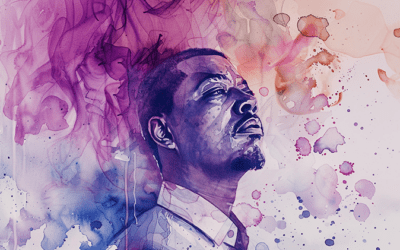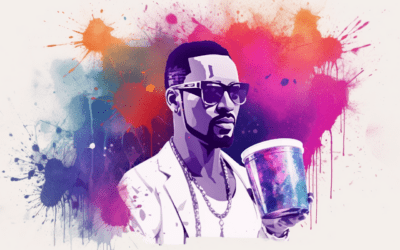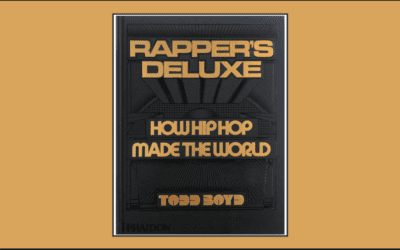Hyphy Movement | Bay Area’s Music
The Bay Area’s Hyphy movement in hip-hop reveals the genre’s innovation and cultural expression capacity. But what is Hyphy? Born from the vibrant streets of cities like Oakland and San Francisco, Hyphy—a fusion of “hyper” and “fly”—has become a defining element of the Bay Area’s cultural and musical identity. With its distinctive style and infectious rhythm, this high-energy subgenre has dominated local airwaves and made significant waves beyond its birthplace.
Explore Best Hyphy Songs of All Time
The Hyphy Definition: More Than Just Music
Hyphy, a term deeply rooted in the Bay Area’s vernacular, is more than just a music genre—it’s a lifestyle, a state of mind, and a vibrant subculture that has permeated every aspect of Bay Area life. The Hyphy definition extends to the unique dance style associated with it. From the expressive “thizz face” to the daring act of “ghost riding the whip,” these dance moves have become synonymous with the Hyphy culture. These dances, often performed at parties and on the streets, are as much a part of the Hyphy identity as the music itself, contributing to the vibrant and dynamic subculture that has grown around it.
Further reading: The Best Hyphy Albums
The Origins of Bay Area Hyphy
The roots of Bay Area Hyphy can be traced back to the late 1990s and early 2000s, a period of significant musical experimentation in the Bay Area. Influenced by other West Coast hip-hop subgenres, Hyphy emerged as a distinctive musical style that captured the energy and spirit of the Bay Area. Key artists and producers played a pivotal role in the birth and growth of Hyphy, making Hyphy beats that would come to define the genre.
The Hyphy Movement: A Cultural Phenomenon
Like the music, the Hyphy movement is characterized by its energy and vibrancy. Local radio stations, particularly KMEL, played a crucial role in popularizing Hyphy music, regularly featuring tracks from Hyphy artists and promoting local events. Clubs across the Bay Area became hotspots for those looking to get Hyphy, with DJs spinning the latest tracks and crowds dancing to the distinctive Hyphy beat.
The Hyphy movement extended beyond music, influencing the Bay Area’s fashion, slang, and party culture. Oversized sunglasses, known as “stunna shades,” became a popular fashion accessory, and terms like “yadadamean” (you know what I mean) entered the local lexicon. Living the Hyphy life was not just about enjoying the genre—it was a lifestyle that celebrated the Bay Area’s unique identity.
Notable Hyphy Rappers and Songs
The Hyphy movement has produced a plethora of talented Hyphy rappers, each bringing their unique flair to the genre. Mac Dre, a pivotal figure in the Hyphy movement, is known for his charismatic performances and party anthems like “Thizzle Dance.” Mistah F.A.B., another influential Hyphy artist, gained popularity with his hit “Ghost Ride It,” a song that encapsulates the spirit of Hyphy. The Federation, a group of rappers from Fairfield, California, also significantly contributed to the Hyphy movement with their hit song “Hyphy.” Through their music, these artists have showcased the diversity and dynamism of the Hyphy subgenre.
Mac Dre
Andre Louis Hicks, better known by his stage name Mac Dre, was a pivotal figure in the development of the Hyphy movement. Born on July 5, 1970, in Oakland, California, Mac Dre’s music career began in the late 1980s. He was known for his charismatic personality and innovative lyrics, often infused with humor and wit. Mac Dre’s music reflected his lifestyle, characterized by its energetic and exuberant spirit, which became a defining element of the Hyphy.
Mac Dre was not just a rapper but a trendsetter and a cultural icon in the Bay Area. He founded Thizz Entertainment, an independent record label that significantly promoted the Hyphy movement. His influence extended beyond music, as he was a key figure in the cultural movement of hyphy, which included unique dance styles, fashion, and slang.
His life was tragically cut short in 2004, but his legacy continues to live on. Mac Dre’s music inspires and influences artists in the Bay Area and beyond. Some of his most notable albums include “Young Black Brotha” (1993), “Stupid Doo Doo Dumb” (1998), “Rapper Gone Bad” (1999), and “Thizzelle Washington” (2002). His songs like “Feelin’ Myself,” “Get Stupid,” and “Thizzle Dance” are considered Hyphy classics.
Mac Dre’s contribution to the hyphy and impact on the Bay Area hip-hop scene cannot be overstated. His music, characterized by its fast-paced rhymes and basslines, not only defined the sound of hyphy but also inspired a new dance style. Despite his untimely death, his influence continues to be felt in today’s music industry.
Read:Mac Dre’s Thizzelle Washington: A Hyphy Odyssey
Too $hort
Too $hort, born Todd Anthony Shaw, is a pioneer of West Coast hip hop and one of the key figures in developing the hyphy movement. Born and raised in Los Angeles, Too $hort moved to Oakland during high school. He started his music career by selling custom tapes from his car, eventually leading to a record deal with Jive Records. His music is characterized by explicit lyrics and funky beats, hallmarks of the Hyphy music genre. Some of his most popular songs include “Blow the Whistle” and “Gettin’ It.”
Read More: Life Is…Too $hort: Classic Bay Area Rap
E-40
E-40, whose real name is Earl Stevens, is another influential figure in the Hyphy movement. Born in Vallejo, California, E-40 is known for his unique rap style, including a fast-paced flow and frequent slang. His album My Ghetto Report Card is considered a classic of the Hyphy genre, with hit songs like “Tell Me When to Go” and “U and Dat.” E-40 is also known for his entrepreneurial ventures, including a line of beverages. Explore E-40’s classic My Ghetto Report Card.
Keak da Sneak
Keak da Sneak, born Charles Kente Bowens, is an American rapper from Oakland, California. He is known for his gravelly voice and for coining the term “hyphy” in 1994. Keak da Sneak has significantly contributed to the hyphy and collaborated with artists like E-40. His music career began in the early 1990s, and he has since released almost 20 albums and several mixtapes. Some of his most popular songs include “Super Hyphy” and “Tell Me When to Go,” a collaboration with E-40 that received national attention.
Mistah F.A.B.
Stanley Petey Cox is an American rapper, songwriter, entrepreneur, community organizer, and activist, better known by his stage name Mistah F.A.B. (an acronym for Money Is Something To Always Have–Forever After Bread). F.A.B.’s music career began in the late 1990s when he was discovered by Jazzy Jim and Gary Archer. He quickly gained prominence in the San Francisco Bay Area hyphy movement. F.A.B. is known as one of the most prominent and colorful figures of the hyphy scene since the late 2000s and is sometimes hailed as the scene’s “Crown Prince.” He has collaborated with major acts such as Snoop Dogg, Too $hort, E-40, B.o.B, Chris Brown, and Eric Bellinger.
Hyphy Movement Influence on Hip-Hop
The Hyphy movement’s influence on the broader hip-hop genre is undeniable. Elements of Hyphy have been incorporated into mainstream music, influencing artists outside the Bay Area and contributing to the evolution of hip-hop. Despite changes in the musical landscape, the spirit ofHyphy continues to resonate in contemporary hip-hop, a testament to its enduring appeal.
Hyphy’s influence can be seen in the work of artists like Drake, who has acknowledged the impact of Mac Dre and the Hyphy movement on his music. The 2011 hit “The Motto,” featuring Lil Wayne, is a prime example of Hyphy’s influence, with its upbeat tempo and catchy hook. Similarly, the production style of DJ Mustard, which has dominated the charts in recent years, draws heavily from Hyphy, further cementing the subgenre’s impact on mainstream hip-hop.
Conclusion
Hyphy is more than a subgenre—a cultural movement that has shaped the Bay Area’s hip-hop legacy. Its energetic music, distinctive dance style, and vibrant lifestyle have left an indelible mark on hip-hop. From its origins in the streets of Oakland to its influence on mainstream hip-hop, Hyphy embodies the spirit of the Bay Area—innovative, energetic, and unapologetically unique. So, why not unleash your inner hyphy and dive into this lively music movement?
FAQs
What are some essential Hyphy albums to listen to?
E-40’s My Ghetto Report Card is a seminal album in the Hyphy movement, featuring hits like “Tell Me When to Go” and “U and Dat.” Mac Dre’s Ronald Dregan: Dreganomics is another classic, showcasing the late rapper’s charismatic style and infectious energy.
How did Hyphy influence other regional hip-hop subgenres?
Hyphy’s influence extends beyond the Bay Area, impacting other regional hip-hop scenes. The subgenre’s high-energy beats and party-oriented lyrics have influenced the development of “ratchet music” in Los Angeles and “cloud rap” in the Pacific Northwest.
Are there any notable Hyphy dance crews or events?
The Turf Feinz, a dance crew from Oakland, is known for their turfing—a dance style closely associated with Hyphy. In terms of events, “sideshows”—illegal street parties featuring car stunts and dancing—are a notorious part of the Hyphy scene.
What does hyphy mean slang?
Hyphy is a slang term that originated in the Bay Area, California. It combines the words “hyper” and “fly,” which describe the energetic, exuberant, and wild behavior associated with the Hyphy movement in hip-hop culture.
What is hyphy rap?
Hyphy rap, or simply Hyphy, is a subgenre of hip-hop music that emerged from the Bay Area, California, in the late 1990s and early 2000s. It’s characterized by fast-paced beats, catchy hooks, and party-oriented lyrics that reflect the vibrant and energetic lifestyle of the Hyphy movement.
What is Bootsy Bay Area slang?
In Bay Area slang, “Bootsy” describes something or someone uncool, outdated, or not in style. The term originated in Oakland, California. You can learn more about it here.
What is the origin of the hyphy movement?
The Hyphy movement originated in the Bay Area, California, in the late 1990s and early 2000s. It was popularized by local hip-hop artists like E-40, Keak da Sneak, and Mac Dre, who infused their music with the energetic and exuberant spirit of the Hyphy lifestyle. The movement was also heavily promoted by local radio stations and clubs.
Is finna bay area slang?
While “finna” is widely used in various regions, it’s not specific to the Bay Area. The term is a contraction of “fixing to,” which means “going to” or “about to do something.” You can read more about it here.
What does rizzing up a female mean?
Unfortunately, we couldn’t find a clear definition for the term “rizzing up a female.” It’s possible that it’s a very localized or niche term, or it may be a typo or mishearing of another phrase. It’s always best to ask for clarification when encountering unfamiliar slang.
Who were the rappers in the Hyphy movement?
The Hyphy movement was spearheaded by several influential Bay Area rappers. Some of the most notable figures include E-40, Keak da Sneak, Mac Dre, and Too Short. These artists contributed to the development of Hyphy music and embodied the Hyphy lifestyle in their public personas.
Read more hyphy-related articles:
Best of Too Short Songs: Nostalgia at Its Finest
Too $hort Albums | A Guide to a Westcoast Discography (Updated 2023)


